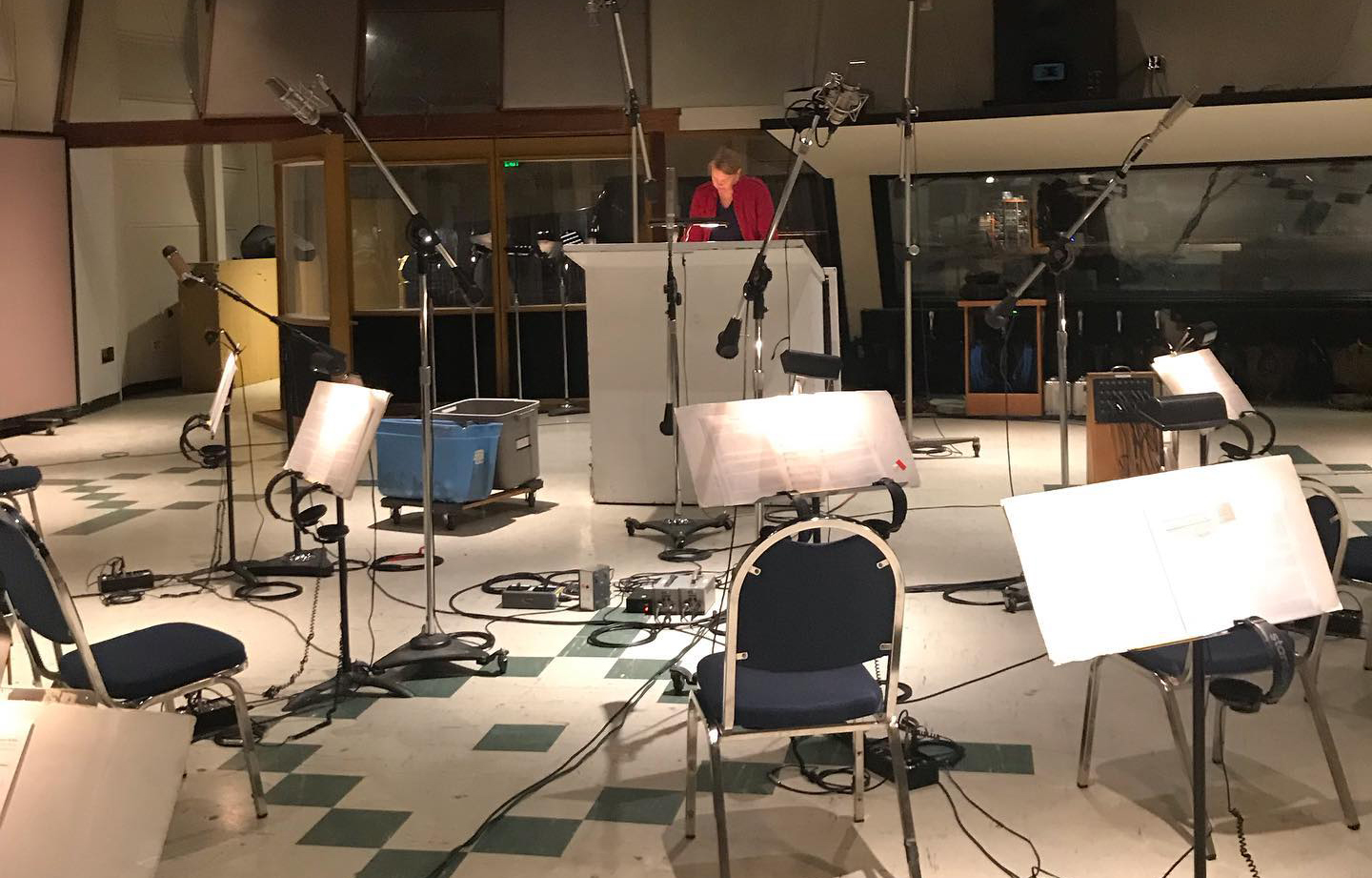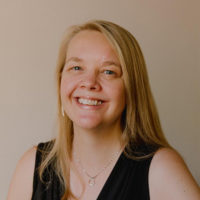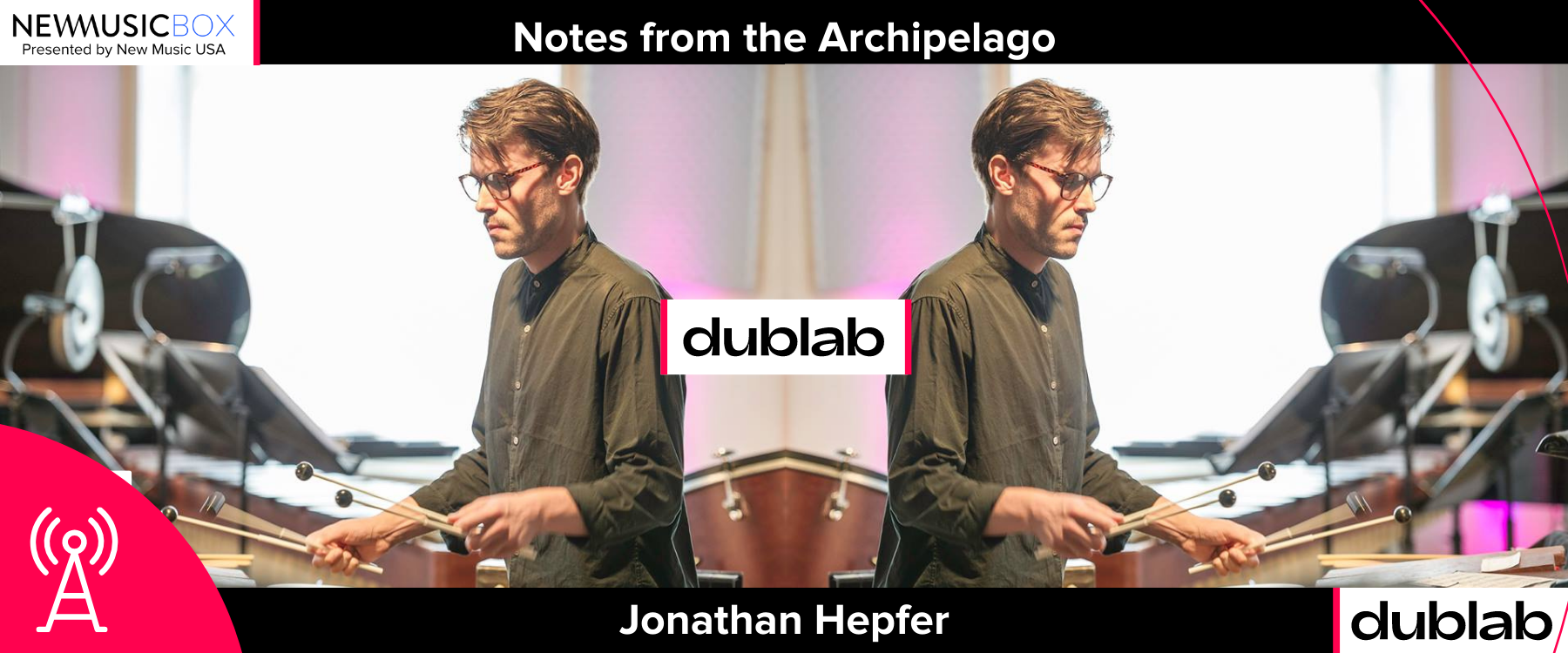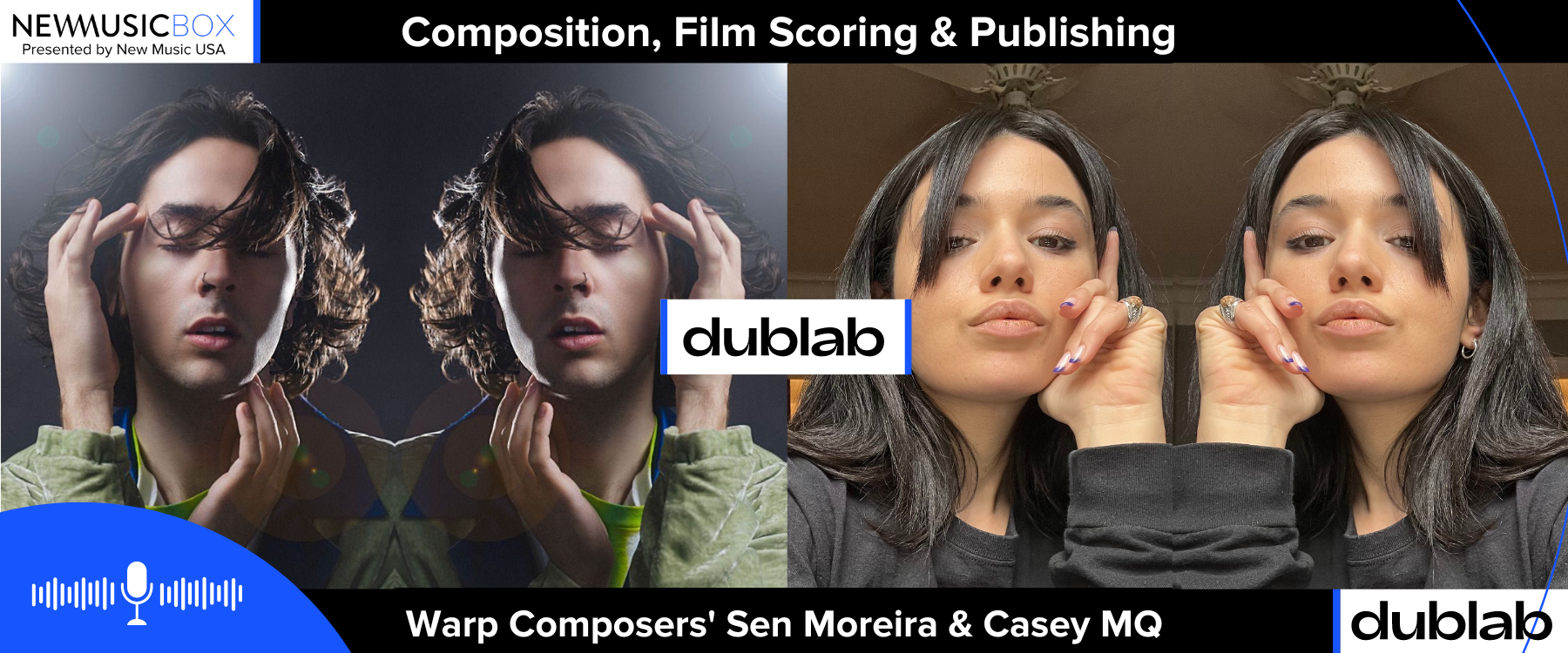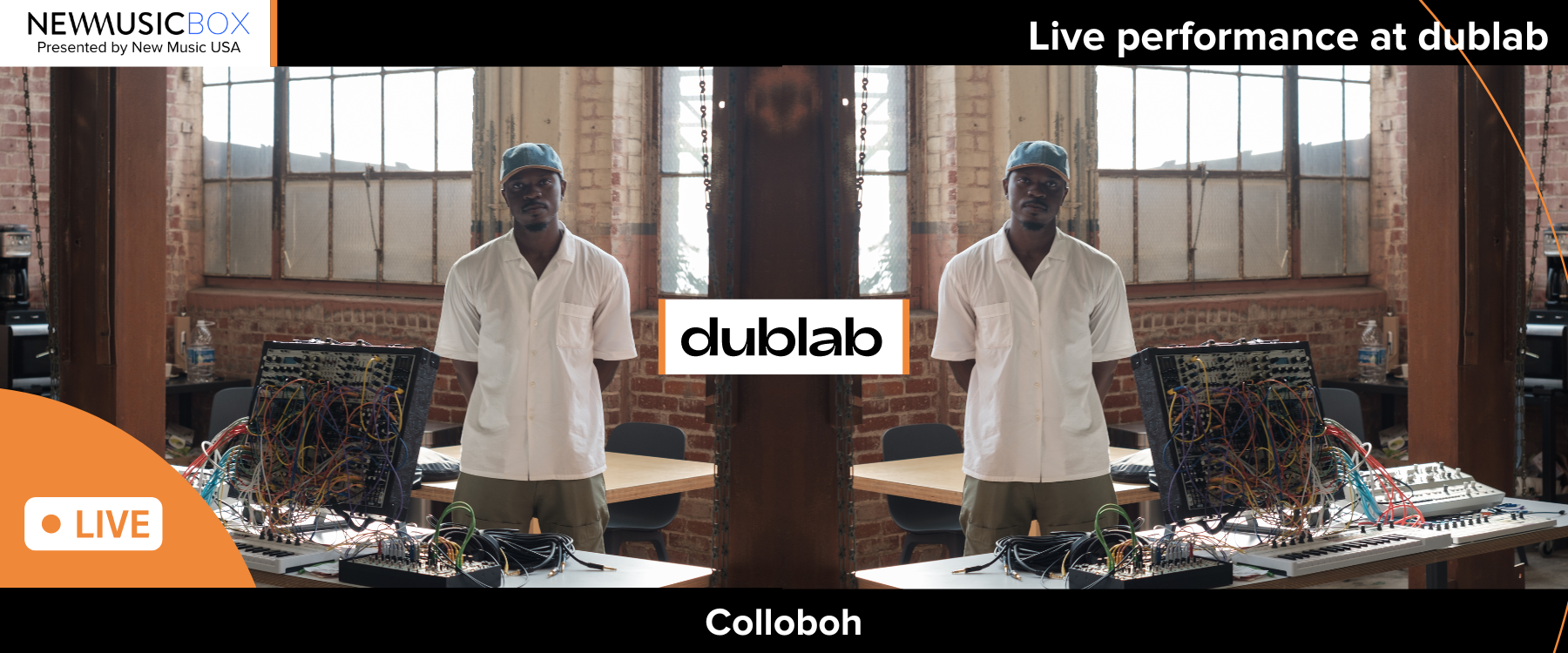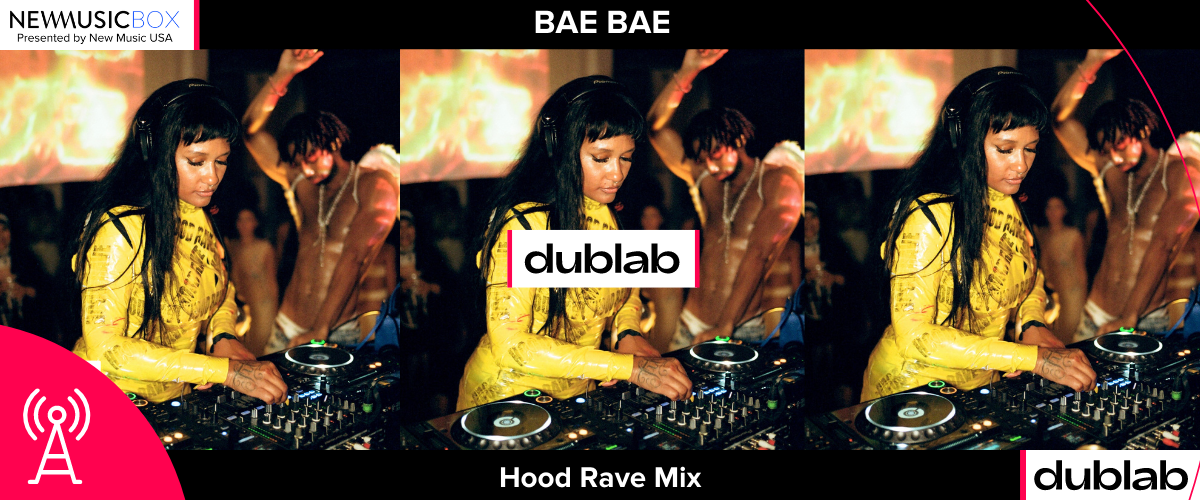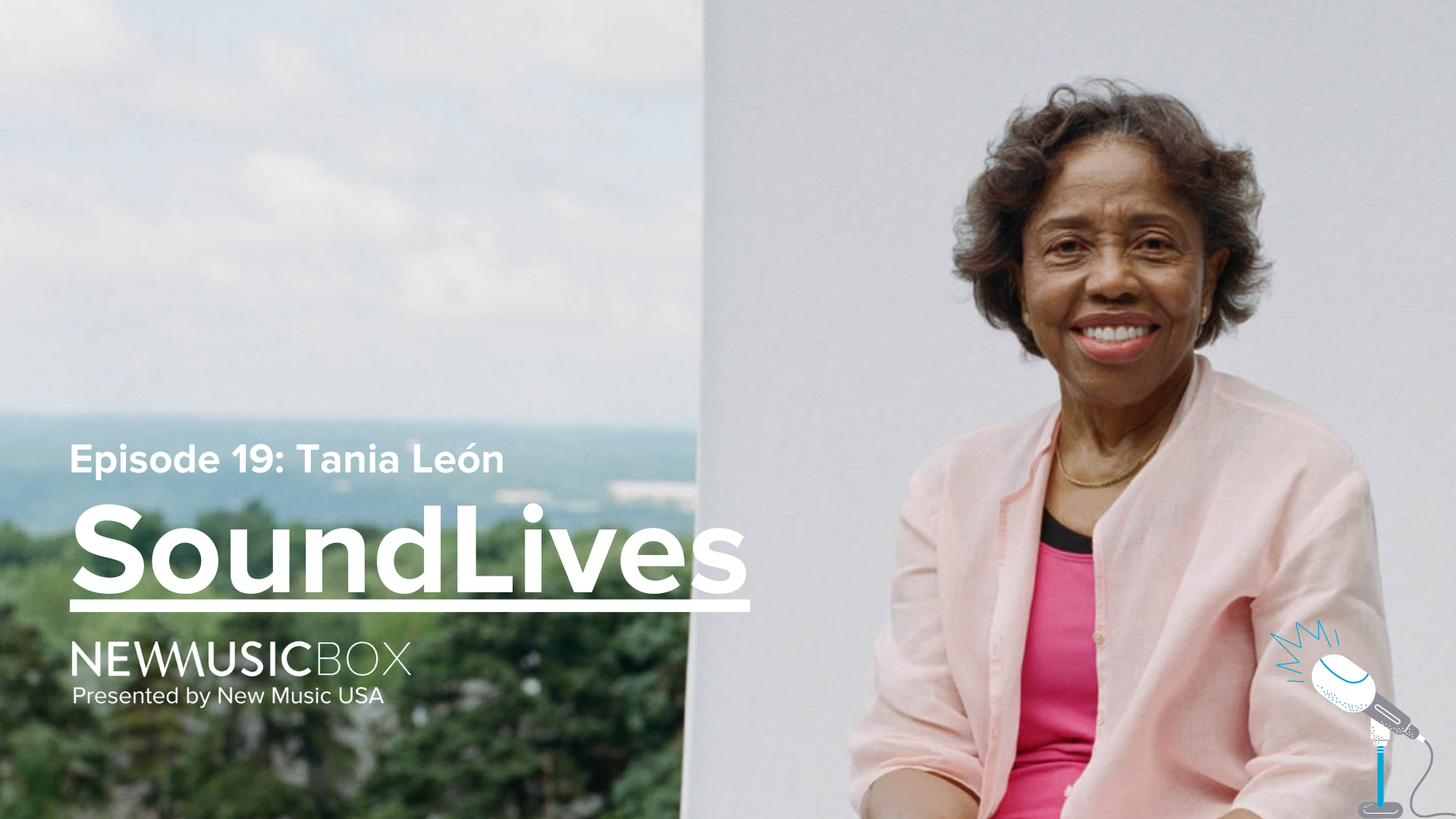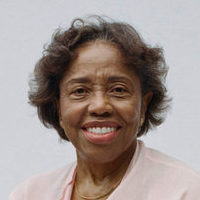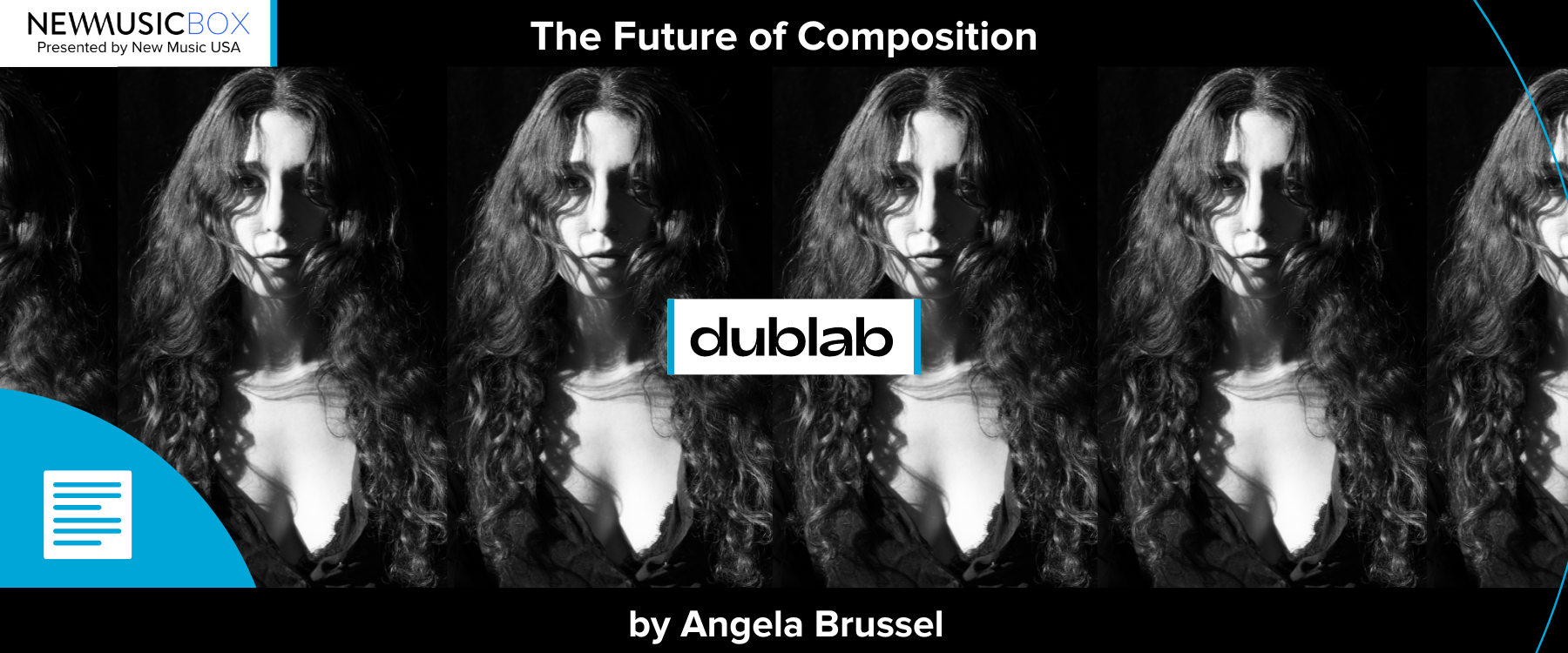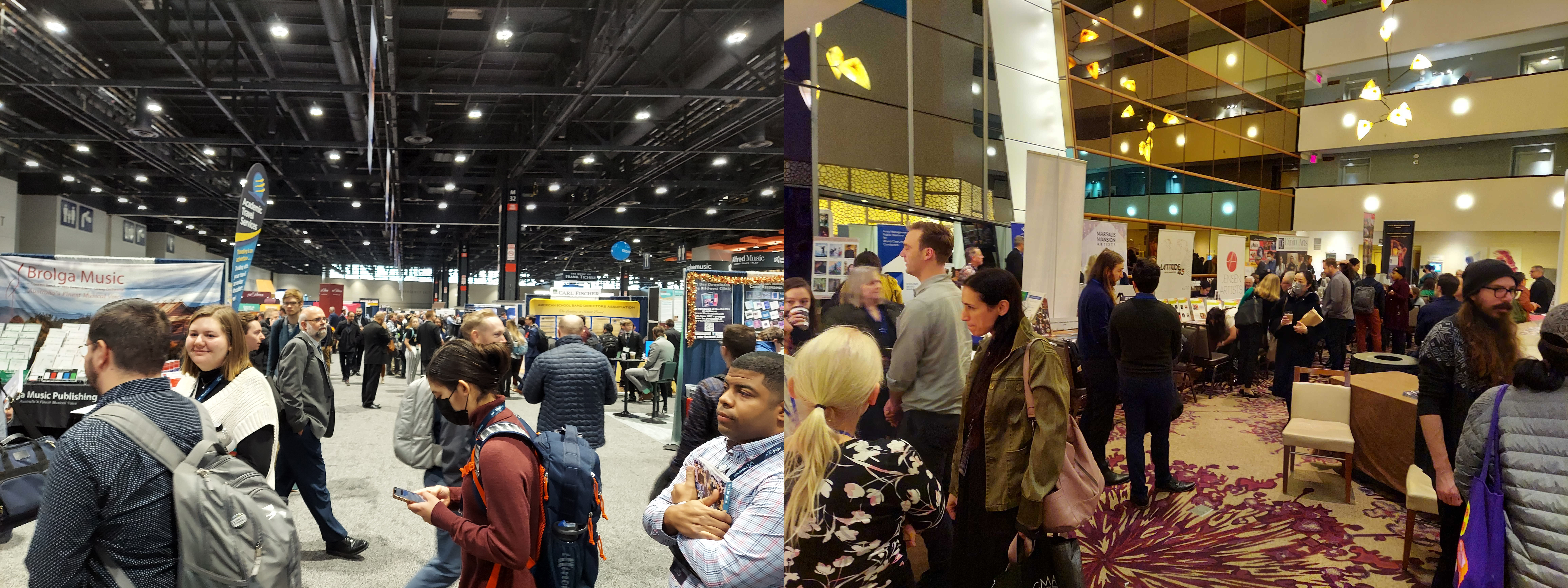
I’ve been attending the annual New York City-based conference of Chamber Music America in January since before the launch of NewMusicBox (which is nearly a quarter of a century) and, since 2015, have also traveled to Chicago in the latter part of December to attend The Midwest Clinic, an annual music expo focused mostly–but not exclusively–on wind bands. (It’s mostly school-based groups, but there are also military and community ensembles who perform here. And, in addition to wind bands, there are also school and community-based string orchestras, percussion ensembles, jazz big bands, and chamber groups.) What keeps me coming back to both these events year after year is the amount of focus on new music and that both attract a wide range of people involved in the music: interpreters, publishers, advocates, and–most importantly–composers from diverse backgrounds who have a very wide range of stylistic inclinations. This means there are always tons of new music-specific conversations (sadly often not the case at convenings for several other national music networks), plus there are tons of exciting live performances of new works. Once again, both events proved being worthy of my time.
Although it’s probably obvious, it needs to be pointed out that the pandemic was responsible for hiatuses of both events. (Strangely I still remember getting extremely sick right after flying back from Chicago in 2019, more than two months before the alleged North American arrival of COVID-19, which miraculously I still haven’t officially contracted, and I hope to keep it that way.) Following the nation-wide shut down in March 2020, the Windy City’s monumental McCormick Place, North America’s largest convention center where the annual Midwest Clinic has taken place since 2009, shut its doors for well over a year. Obviously, there was no 2020 Clinic except for a somewhat surreal makeshift virtual event over Zoom. But McCormick gradually resumed business in June 2021, and by December the venue was purported to be back to “normal.” So there was a 2021 Midwest Clinic though it did not seem to attract its usual audience of over 17,000 people.
Since it always takes place in January, the much smaller CMA conference was the last major music gathering I attended before everything shut down in 2020. But for the next two years (2021 and 2022), it was deemed too unsafe to ask people from around the country (and, in fact, the world) to attend this sometimes claustrophobic-feeling event which for many years has taken place on three floors of a medium-sized hotel a block away from Times Square. Instead CMA presented virtual conferences which also took place, as it seems everything else did, over Zoom. So the gathering this past weekend was the first in-person CMA conference in three years and references to Rip Van Winkle were frequent as was an overarching sense of resilience and fortitude. As a result, this year’s CMA get together felt much more like a long awaited homecoming than Midwest Clinic did two weeks earlier. Still, neither was a “return to normal”; both events veered from their previous formulas in significant ways and overall these changes were refreshing and welcome.
The Midwest Clinic and the Chamber Music America conference both veered from their previous formulas in significant ways and overall these changes were refreshing and welcome.
Frank J. Oteri
The most clever composers have formed collectives and support each other. As a result, a much greater diversity of composers is now present there and it has made a difference.
Frank J. Oteri
The overall lack of parity between male and female music creators throughout the CMA conference showcases was as noticeable as it was at the Midwest Clinic.
Frank J. Oteri
Obviously today's extremely wide range of compositional voices are the most representative of world in which we currently live, but there are plenty of reasons why it is important to show that a diverse range of people writing music is not a 21st century aberration and highlighting that range offers a fuller view of the great repertoire that is all of our inheritance.
Frank J. Oteri
"This music has been marketed as a luxury item for such a long time ... but that's such a greedy way to experience this music."
Nicholas Phan
"Our goal should be to bring people from one state of consciousness to another."
Giancarlo Esposito
What we have the ability to control is our attitude.
Giancarlo Esposito
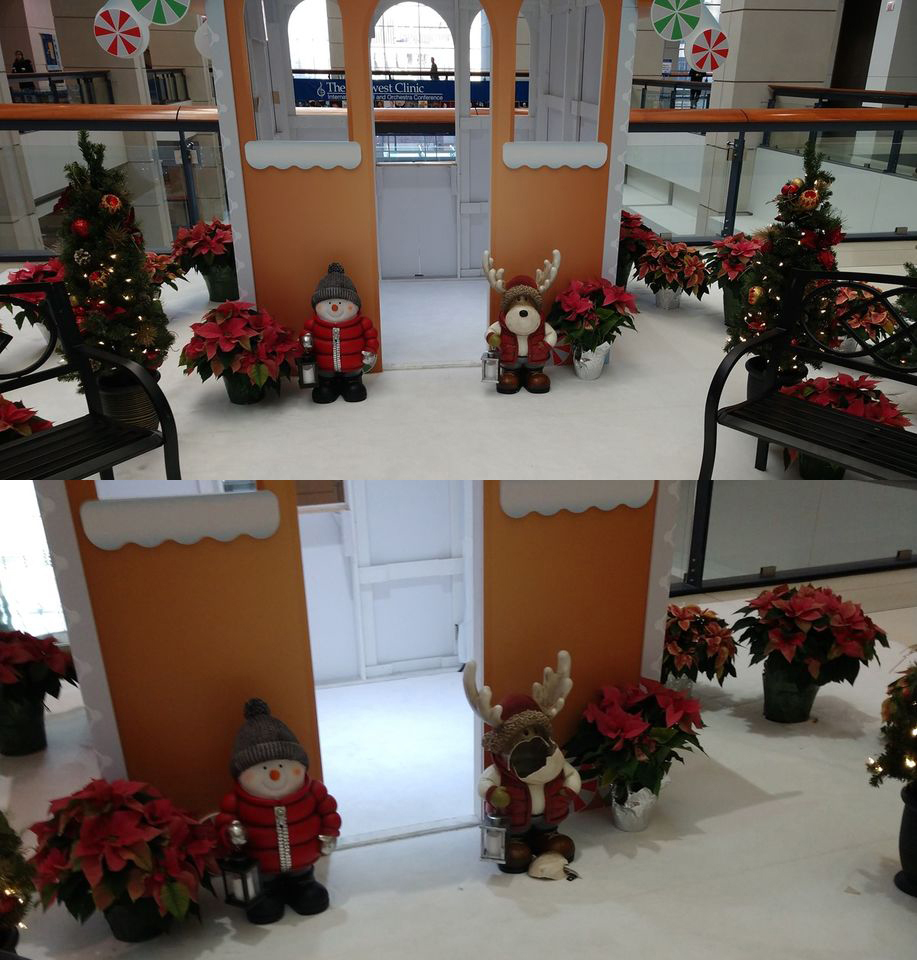
Just about the only difference I perceived in the holiday decorations since I’ve been attending the Midwest Clinic is that at one point in 2019 the reindeer (which looks more like a moose to me) mysteriously lost its face. It was missing from the display in 2021 and 2022, but everything else was there.
Since I began attending the Midwest Clinic in 2015, the event has had pretty much the same format every single year down to the same banner photos of previous years’ honorees and even the same holiday decorations. From what I can glean, it has been exactly the same long before I began showing up. People could begin registering on a Tuesday evening, but the first event would always begin at around 8:00 A.M. on Wednesday morning. For three days there would be non-stop activities–many competing showcase concerts and panels (which they call clinics) as well as reading sessions, product showcases, and by-invitation only ceremonies (which are not printed in the program book, like the announcement of the annual Revelli Award), plus a bustling exhibition area–with all listed events usually ending by 9:00 pm in the evening. After those three somewhat overwhelming 13-hour plus days, there would be a relatively quiet final half-day on Saturday which way fewer people attended, ending with a showcase concert by a high profile wind band ending by early afternoon. (On that last day, not only is the Exhibition Hall already closed, so are almost all of McCormick Place’s food concessions making it feel like the event was already over.) Bands usually play in the same set of large rooms with one specific room, a significant walk from all other events on the schedule, reserved for jazz bands. When I first started attending this thing it felt like these groups were being segregated, but the long walk to hear them was always worth it.
This year the decorations as well as the banners of honorees were mostly the same (though thankfully, finally, they weren’t exclusively white men) as were the room assignments and the planned three and half-day structure. But there were two significant differences to the schedule, albeit only one of which was planned. Breaking its usual calendar, activities began on a Monday and were scheduled to end in the middle of the day that Thursday. But it was not to be. On Tuesday, fearing an historic winter storm which ultimately resulted in the cancellation of more than 18,000 flights nationwide, the organizers cut the event short, shutting the exhibition hall half a day early on Wednesday and rescheduling the events of the final Thursday half-day to other times where rooms were open on Tuesday night and Wednesday. By mid-Wednesday, McCormick Place seemed like a ghost town when a mere 24 hours earlier it felt like rush hour at Grand Central Station (and also, due to most folks not wearing face masks, like a massive potential super spreader event).
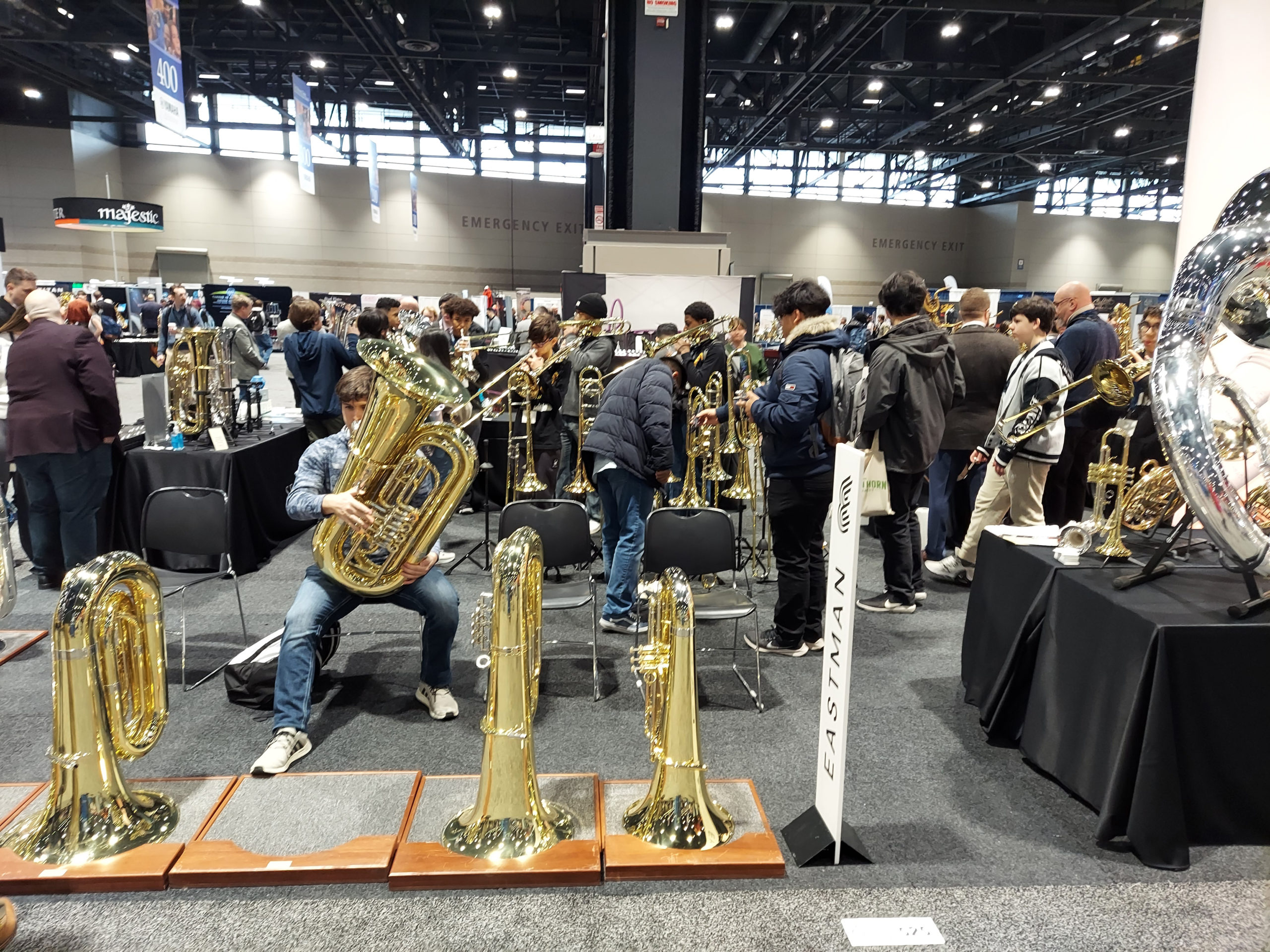
There were soooooo many people at this thing, but there were also so many tubas!
As a result, I wound up attending far fewer events than I usually do and, I must confess, I felt somewhat cheated though obviously the bad weather wasn’t the fault of Midwest Clinic’s organizers. Nevertheless, from what I did attend, I was able to perceive what I believe is real positive change. While the composers of the repertoire for performances at the Midwest Clinic are still quite far away from being truly representative of the cultural and gender diversity of the population of this country, there seemed to be a real effort to foreground music by Black composers as well as by women. It must be pointed out that the the entire event is heavily driven by music publishers. In the old days, the big publishers actively promoted certain composers and their works were the most prominent. In the 21st century landscape, where self-published composers can compete in a more level playing field, there is a greater opportunity to break into this network. It is something composers like John Mackey and Johan De Meij discovered a long time ago and they still keep coming every year. Admittedly, it’s not cheap. If your music gets performed in one of the concerts, you must be represented by a booth in the exhibition hall. This is a much easier expenditure for a big company than it is for an individual. But the most clever composers have formed collectives and support each other. As a result, a much greater diversity of composers is now present there and it has made a difference.
Omar Thomas, who in 2019 became the first Black composer ever to receive the Revelli Award, was a superstar at this year’s Clinic. He was engulfed by fans when he visited the booth of the Blue Dot Composers Collective (which he is one of the seven members of) in the exhibition hall. Thomas’s 2019 band piece celebrating the bravery of trans women, A Mother of a Revolution, conducted by Cynthia Johnson Turner (another superstar) during Monday’s concert by the Brooklyn Wind Symphony, was definitely one of this year’s musical highlights. I was also completely wowed by another work on that same program by a Black composer, Kevin Day‘s Concerto for Wind Ensemble, though I wish all five movements had been played and not just three. Music by Kelijah Dunton, Evan Williams, Katahj Copley, Jessie Montgomery, Daniel Bernard Roumain, Jonathan Bailey Holland, the late Florence Price, and JaRod Hall (the winner of the 2nd Barbara Buhlman Composition Prize) was also featured. Arguably this year’s biggest star was Vietnamese-American composer Viet Cuong who had several pieces performed, most prominently the 16-minute Vital Sines (2022), for which the United States Navy Band was joined by the six members of Eighth Blackbird on both of their Monday evening concert programs as well as a panel talk the following day during which excerpts were played. Another composer making huge strides at the Midwest Clinic is Aakash Mittal, who is interesting in finding common ground between the musical traditions of India and the wind band. In 2021, he participated in a panel about Asian perspectives in wind band music after having his first wind band piece played at Midwest by the Walsh Middle School Honors Band from Texas. This time around his Salt March, his second wind band piece and a consortium commission, was yet another piece performed by the Brooklyn folks.
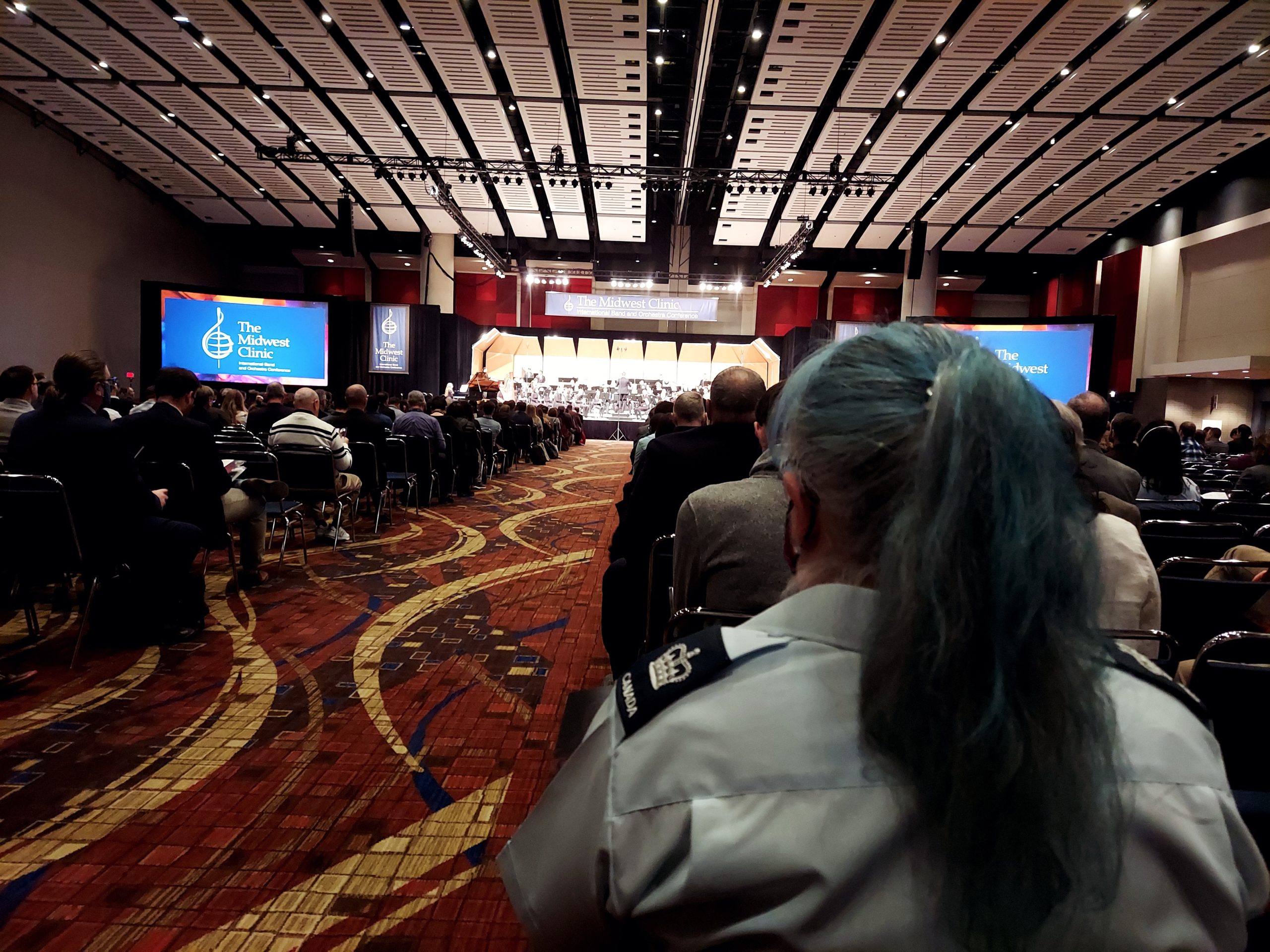
The audience waits in anticipation just before the start of the Brooklyn Wind Symphony’s showcase.
While there’s nowhere near a gender parity among the composers featured during Midwest Clinic concerts, most programs this year included at least one work by a female composer and sometimes there were more. Back in 2015, the only two female-identifying composers listed in the program book were Julie Giroux (whom I decided I had to meet and several years later spoke with for NewMusicBox) and Keiko Yamada (who did not attend that year because I later found out she does not actually exist). In the intervening years, seeing the name of a female composer on a program, still a rarity, was often the deciding factor in determining which of the sometimes five simultaneous concerts I would attend. This year I didn’t get to hear every piece by a female composer that was performed since they were no longer such complete outliers, but nevertheless it was gratifying to hear works by Nicole Piunno, Laura Estes, Augusta Read Thomas (her 2020 composition Crackle was another highlight of the second Navy Band concert), Kimberly Archer (who had previously composed a work that was played by the U.S. Marine Band at Joe Biden’s Inauguration), Christina Huss, Carol Brittin Chambers, Yukiko Nishimura, and, of course, Julie Giroux. Frustratingly, though, the Revelli Award continues to be exclusively a domain for male composers and this year’s winning work, Flying Jewels by Colorado State University-based James M. David, though extremely effective, was no exception. Obviously there were also some other fabulous pieces by men. I’d be remiss not to mention David Biedenbender‘s stunning sax quartet concerto Severance (of which sadly only two of the three movements were played), Jim Stephenson‘s really exciting Wildcat Run, Joel Love‘s extremely moving It is Well, and finally the late John Zdechlik‘s masterful Rondo Capriccio which is hardly a brand new work (it was composed in 1979) but I had never heard it before so it was new to me. Finally, I must call attention here to the extraordinary Cedar Falls High School Jazz One from Iowa, the one jazz group I was able to trek over to hear. I was completely captivated by every piano solo played by high school senior Colten Thomas as well as the idiosyncratic drumming of junior Kate Galyen who have both been part of the band for three years. I can’t wait to hear them in other contexts one day. Still, when the whole thing came to an abrupt end a day before it should have, it was like suddenly going cold turkey. That’s why it was great to be able to have a similarly deep, albeit very different, musical immersion only two weeks later thanks to Chamber Music America.
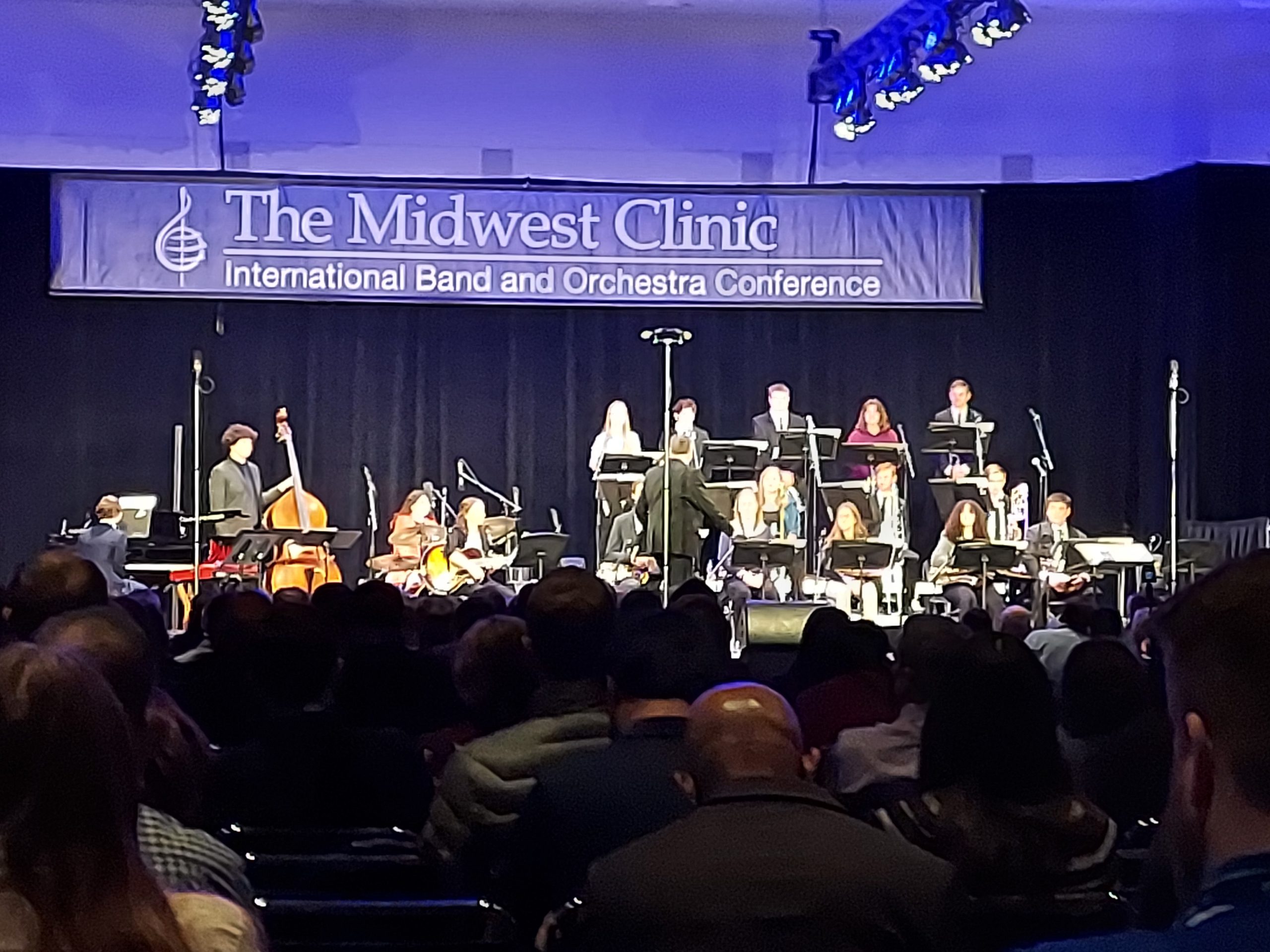
The Cedar Falls High School Jazz One on stage at the designated jazz venue at McCormick Place.
If the Midwest Clinic is a successful story of incremental change, the Chamber Music America conference is a successful story of radical transformation. Well, maybe radical transformation is a bit of an exaggeration. Still, there were enough differences in the organization of this year’s conference so that it felt like a significantly different experience. In the past, the conference had three tightly packed days of activities starting early on Friday morning and running through Sunday evening. Although for several years there have also been several pre-conference sessions starting on Thursday. This year, there were also some events on Thursday, but the official conference opening actually took place on Thursday night with the annual reception hosted by BMI which is always attended by a significant number of BMI-affiliated composers who are in town in addition to the CMA conference registrants. This event, which is one of the new music community’s great schmoozefests, used to be the culminating event of the first day. By moving it an evening earlier, it was a great way for people to just catch up with one another after, in many cases, not seeing each other for three years. (Although admittedly a drinks and small bites reception in the COVID-era is somewhat akin to a mild form of Russian Roulette. A great many folks, myself included, remained mostly masked, though it’s impossible to nosh and chat while masked, so I sat at a table in the corner instead of engaging in my previous BC-era peregrinations around the room.)
The real radical change, however, was the way that ensemble showcase performances were presented. In previous years, showcases were scheduled at the hotel on Friday and Saturday afternoons, sometimes competing against panel sessions and time to explore the exhibition hall. The beginnings and endings of showcase sets were always hectic, with folks going in and out, picking and choosing which groups they wanted to hear and it was often extremely noisy directly outside the room where the showcases took place, so sitting in the back was not ideal. (I commented in previous years that it seemed like the classically-oriented groups and the more jazz or improvisation-inclined groups attracted very different audiences with little overlap, which was extremely upsetting given CMA’s mission to bring all this music together.) But this year CMA held all the showcases at DROM, an eclectic music venue in Alphabet City that serves food and has a full bar. (An aside: the food, which was mostly Middle Eastern fare, was terrific if a bit overpriced; it was an expensive night out in New York City.) There were eight showcases on Friday night from 6:00 P.M. until around 10:15 P.M. and an additional six on Saturday morning from 11:00 A.M. until approximately 2:15 P.M.–all showcase sets were supposed to run no longer than 20 minutes but things inevitably went a bit overtime. Still, people stayed and listened, and they listened to an incredible range of music.
Friday night’s marathon opened with a formidable Rochester NY-based artist-led ensemble called fivebyfive who were joined by Minneapolis-based electric harpist/composer Amy Nam in a performance of her fascinating CMA-commissioned …of breath and fire which also featured video footage of glass sculptures being created by Madeline Rile Smith. They subsequently performed Anthony R. Green‘s captivating … a tiny dream. I was disappointed not to hear the works by Missy Mazzoli and Edie Hill that were also listed on the program, but 20 minutes races by pretty quickly. The group was following by the stunning NYC-based Baroque ensemble Twelfth Night who did not perform any new music, but everything they played sounded new (Purcell and Fasch, plus an aria from BWV 199 by J.S. Bach for which they were joined by the mesmerizing soprano Julie Roset). The Beo String Quartet, which followed, also cancelled a piece they were supposed to perform by Missy Mazzoli, which was to be their opener. Instead they performed an work they themselves composed which was inspired by Mexican music in which at one point members of the quartet were whistling. It was much more captivating than their subsequent medley of a movement from Shostakovich’s 8th Quartet and an excerpt of Beethoven’s Opus 18 No. 1, but at least they ended with a portion of a work by contemporary Mexican composer Gabriela Ortiz.
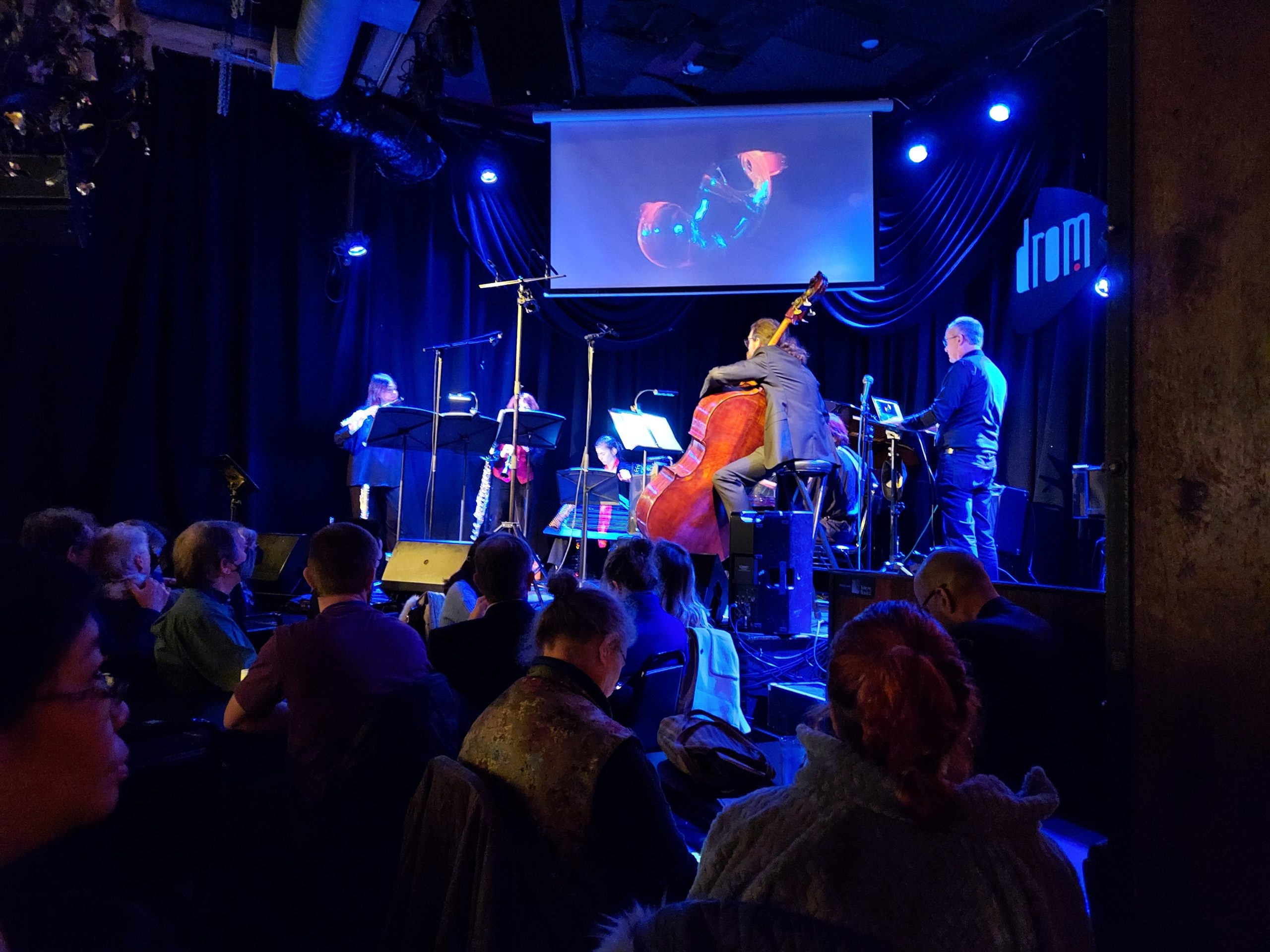
CMA’s showcases at DROM began with fivebyfive joined by electric harpist Amy Nam for a performance of Nam’s …of breath and fire featuring a video projection of glass sculptures being created by Madeline Rile Smith.
The Dyachkov-Saulnier Duo also felt obliged to perform Beethoven. (In late December, Atma Classics just released the duo’s recording of his complete sonatas and variations for cello and piano, so they performed excerpts from a set of variations as well as one of the sonatas.) Mysteriously they also performed a movement of a sonata by Shostakovich, explaining that although he was Russian and Russian repertoire is taboo at the moment given Russia’s invasion of Ukraine, he was a dissident. And they ended with the Burlesque of the late jazz-inspired Ukrainian-born composer Nicolai Kapustin who spent most of his life in Russia. All of this music is top shelf repertoire, but if they were trying to make a statement about the situation in Ukraine, there are tons of living Ukrainian composers who work deserves a hearing. Also, why only play music composed by men? In 2023, it almost seems tone deaf. But they were certainly not the only group featured that seems out of touch with the zeitgeist. The overall lack of parity between male and female music creators throughout these showcases was as noticeable as it was at the Midwest Clinic. Duo Sonidos, which pairs violin and classical guitar, followed with transcriptions of music by Astor Piazzolla and Manuel Ponce plus a work written expressly for them by Clarice Assad which was by far the most interesting thing they played. Far more exciting was a transcription of music by another Latin American composer, Alberto Ginastera, by the Argentinian jazz vocalist Roxana Amed who performed with her quintet. Their rendition of Wayne Shorter’s Virgo was also ear opening.
The Aznavoorian Duo (sisters Ani and Marta, another cello-piano pairing) were up next and featured a program centered predominantly around Armenia (their ancestral homeland) but also included a couple of composers from other parts of lands that were also once part of the Soviet Union. They began with a transcription of a melody by the 19th century Armenian Komitas who is often considered the father of Armenian classical music and followed with a work inspired by Armenian culture from the American Peter Boyer. Again, I would have loved to have heard cello and piano repertoire by some living Armenian composers, but nevertheless I loved Ani’s tone on her cello, which was an instrument her father had built expressly for her. At this point, after more than three and a half hours of music with no intermission, I was getting pretty wiped out. But I was so glad I stayed to hear the final set featuring the Johnston Brothers, Ziggy and Miles, a guitar duo originally from Australia who are currently studying at Juilliard. Their combination of precision and duende (there’s really no better word for it even though they weren’t playing flamenco) was flabbergasting. Their opening performance of Brazilian guitarist/composer Paulo Bellinati’s Jongo was a non-stop energy jolt and the subsequent Rodrigo Tonadilla was also thrilling. Even their transcription of Debussy’s bonbon Clair de Line was revelatory. But their concluding account of Australian Nigel Westlake‘s Songs from the Forest was sublime. As they mentioned, most Americans have only heard his music for the movie Babe: Pig in the City. I know whose music I will be tracking down as much as I can of later this year.
The following morning’s collection of showcases began with Doug Beavers‘s Luna, a nine-piece conjunto which spanned Latin Jazz and full on salsa. It was a welcome wake up since DROM’s coffee wasn’t. The noticeably quieter Interwoven, an intercultural ensemble combining Western bowed strings with Chinese erhu and Japanese koto, was up next. They performed works combining Western and Eastern instruments by Americans Thomas Osborne and Daron Hagen as well as suite featuring music by early 20th century Chinese composer Liu Tianhua that was later reworked by Chen Yaoxing. More cross-cultural music followed, a duo comprised of Dutch trumpeter Eric Vloeimans and American accordionist Will Holshouser, both of whom composed repertoire they performed. I was particularly moved by Redbud Winter, a work Holshouser wrote in memory of his mother.
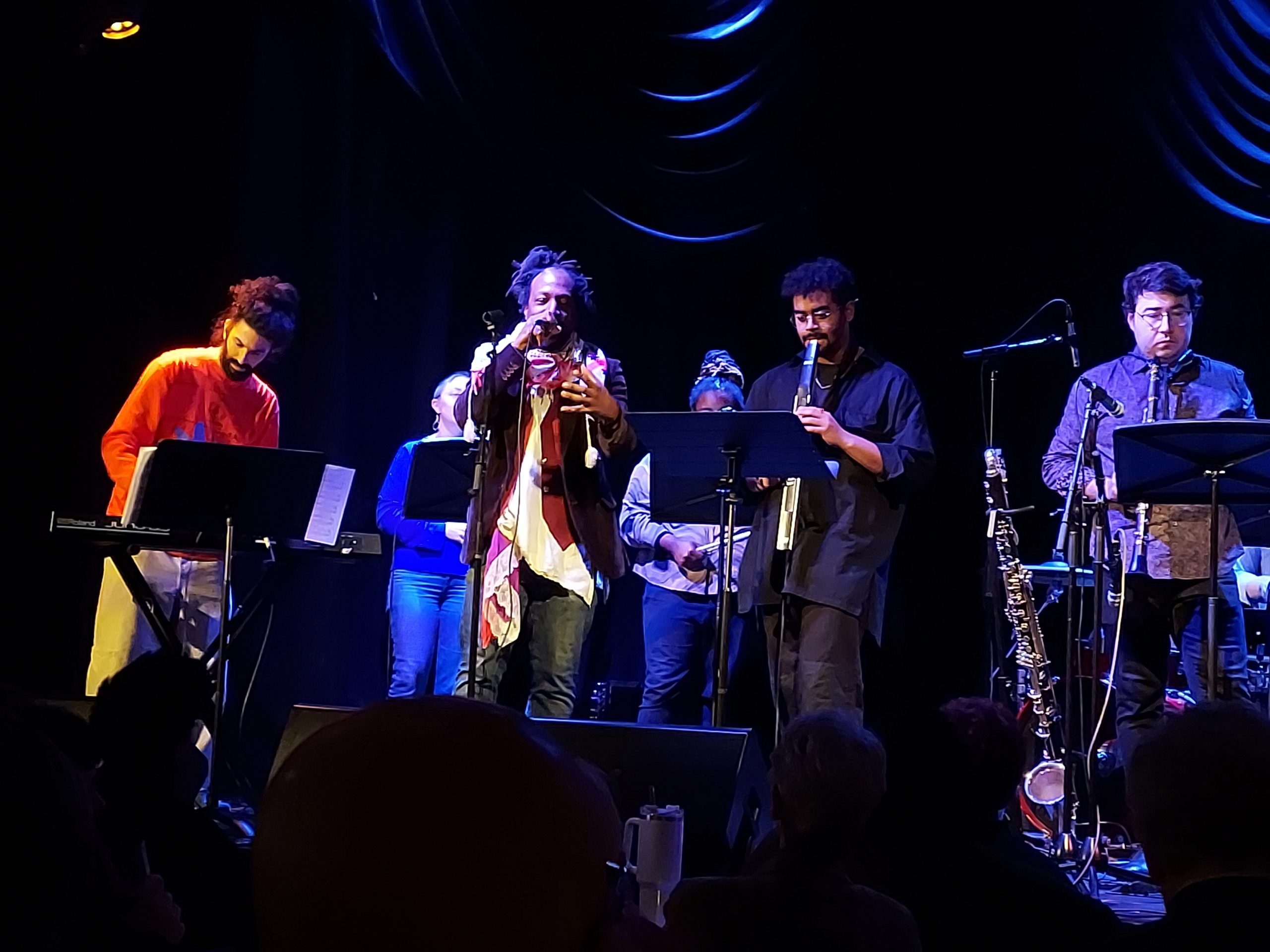
ShoutHouse was literally larger and louder than any other ensemble that performed during the 2023 CMA conference showcases at DROM.
Next, it was back to full throttle volume with ShoutHouse, a cross-genre nonet fronted by composer Will Healy which combines musicians with classical, jazz, and hip-hop backgrounds in performances of music mostly composed by Healy with words by spiritchild, who is the group’s MC. They also performed a piece written expressly for them by Jack Frerer. Acknowledgement should also be given to ShoutHouse’s seamless interweaving of acoustic and electronic sounds which rarely comes off so effectively in a live music performance. I was floored by Alfredo Colon‘s soloing on EWI (electronic wind instrument). They were a tough act to follow, but there were still two more sets. Tallā Rouge, a self-described “Cajun-Persian viola duo,” performed mostly excerpts including, ack, more Beethoven, though it was nice to hear their performances of music by Caroline Shaw and Dave Rimelis. Finally, the Dan Pugach Nonet, a three wind, three brass, piano-bass-drums nearly big band devoted to performing the music of drummer/leader Pugach. Most of the players had a chance to solo except for, frustrating, bass trombonist Jen Hinkle, the only woman in the group and, more frustrating, the only female instrumentalist in any of the jazz-oriented ensembles. From where I was sitting I could clearly hear her tone on her instrument and the music could have greatly benefitted from some foregrounding of that lower register. As soon as they finished playing, it was a mad rush to the chartered bus to take us back to the hotel with only a few minutes to spare before the afternoon panels began.
I have not yet written about any of the panels, some of which also took place on Friday afternoon before the showcases, figuring it was better to describe them all in one place. On Friday, I attended a panel about making concerts accessible to a neurodiverse audience. The presenter, Jenna Richards, offered some valuable insights about optimal durations, providing attendees with as much advance information as possible, and working with the performance space so it could be made less constricting than the typical rows of seats in most venues. But by focusing on presenting movements from standard repertoire rather than encouraging session attendees to commission composers who could create vibrant music designed especially for such a performance it seemed far less transformative a presentation than it could have been. Far more useful was the session led by a group of musicians associated with ChamberQUEER—Danielle Buonaiuto, Aiden Feltkamp, Brian Mummert, and Mazz Swift–with the provocative title “‘Til All of Us Are Free: A Liberatory Framework for DEI in Chamber Music Organizations.” The panelists had the very crowded room of session attendees breakout into smaller groups to discuss ways in which a chamber group could diversify its audience and funder base. The group I was part of mostly agreed that such a plan must begin with diversifying the people who are performing and the repertoire being performed. But not everyone held that view. It got somewhat contentious at times. When various groups were reporting back, a member of one of the groups talked about the need to sometimes devote concerts to core repertoire which they have now decided to embellish with commentary from the stage along the lines of “imagine what kind of music would have been written had one of Bach’s daughters been allowed to compose music.” To which I felt compelled to raise my hand and counter that there were female composers who were active at that time. What about Élisabeth Jacquet de La Guerre? As well as Black composers. So if you’re performing Mozart, why not also include a piece by Joseph Bologne, the Chevalier de Saint-Georges. Obviously today’s extremely wide range of compositional voices are the most representative of world in which we currently live, but there are plenty of reasons why it is important to show that a diverse range of people writing music is not a 21st century aberration and highlighting that range offers a fuller view of the great repertoire that is all of our inheritance.
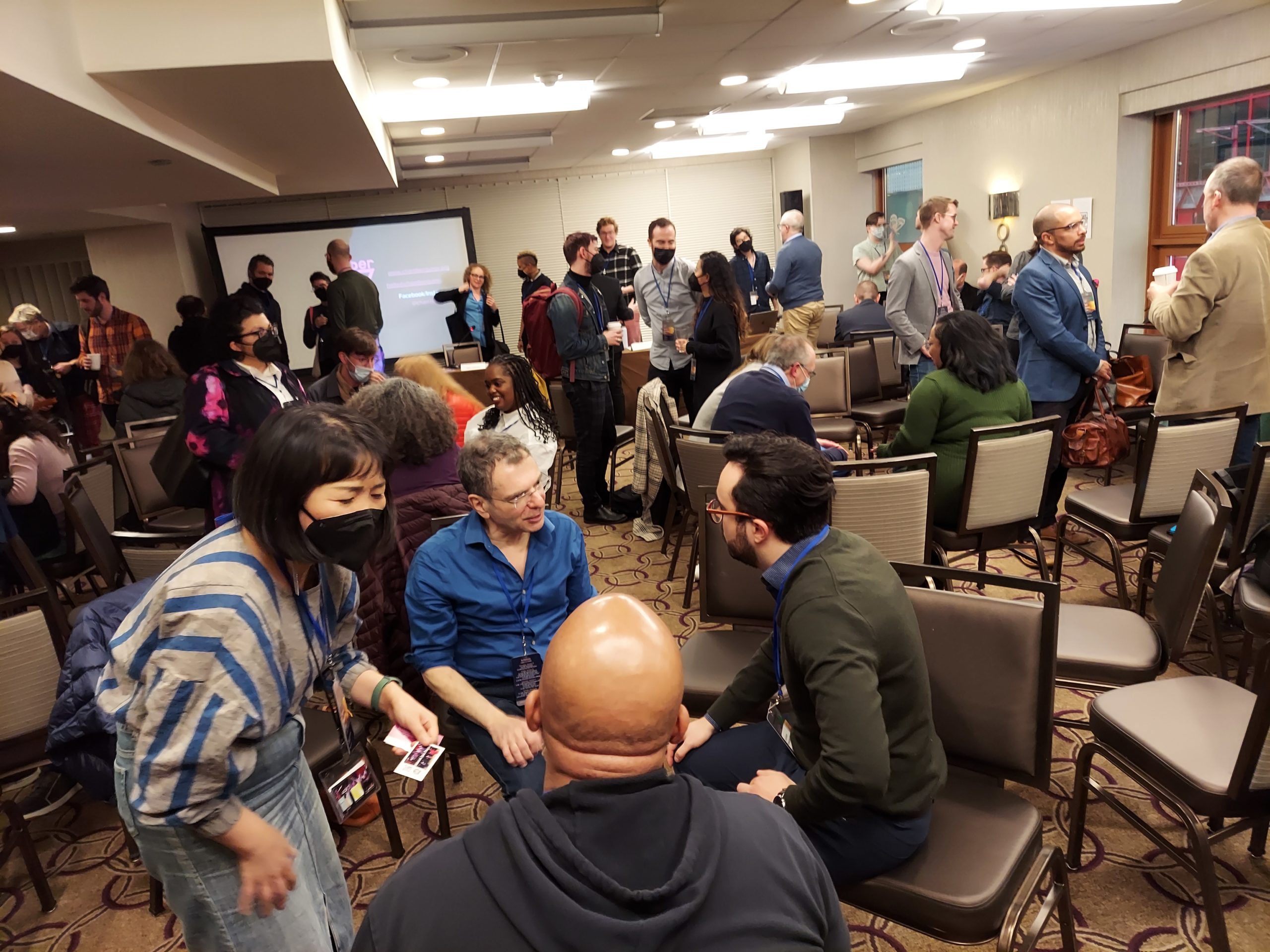
Breakout groups for GenderQUEER’s EDI panel at the 2023 CMA conference continued having provocative conversations long after time ran out for the session.
On Saturday, I attended a session moderated by 2023 CMA Conference Chair, flutist Jennie Oh Brown, featuring two visionary musician/administrators: tenor Nicholas Phan who also serves as the Artistic Director of the Collaborative Arts Institute of Chicago; and jazz singer Dwight Trible who also serves as Executive Director of the The World Stage performance gallery in Los Angeles. Perhaps the biggest insight from that session was Phan’s quip that the problem with classical music is that it “has been marketed as a luxury item for such a long time” and “that’s such a greedy way to experience this music.” Finally, I attended a very practical and informative session about touring and presenting during the pandemic which was billed as “jazz and chamber music” but everyone on the panel came from a jazz perspective–Rodney Marsalis and Morgan Pappas (from Marsalis Mansion Artists) plus artist manager Gail Boyd, a co-founder of the Jazz Coalition. Although the situations they described, everything from unpaid fees to the uncertainty of rescheduling, are equally applicable to classical music, as well as indie rock, funk, or bluegrass for that matter. After attending The Midwest Clinic where you wouldn’t be blamed if you erroneously believed the pandemic was over, it was refreshing to hear people talk about the ongoing problems we are all still facing in trying to make music in these still extremely precarious times.
After all the heady sounds and ideas on Friday and Saturday, Sunday was a bit of a let-down. The day’s activities began with a somewhat lackluster networking breakfast that was not heavily attended. Thankfully there was an amazing concert at the hotel later in the afternoon devoted to two CMA commissions: Martha Sullivan‘s Certain Dragons performed by the dazzling vocal sextet The Western Wind; and Arun Ramamurthy‘s New Moon Suite performed by his trio consisting of Sameer Gupta on drumset, Damon Banks on electric bass, and the composer on violin performed in Karnatic style. I’m glad it was not followed by anything else, since anything else would have felt extremely intrusive after such sonic transports, but it might have been nice to have an additional panel in the morning, although I remember all too well how disappointing it was to participate in a Sunday morning CMA panel which was very poorly attended.
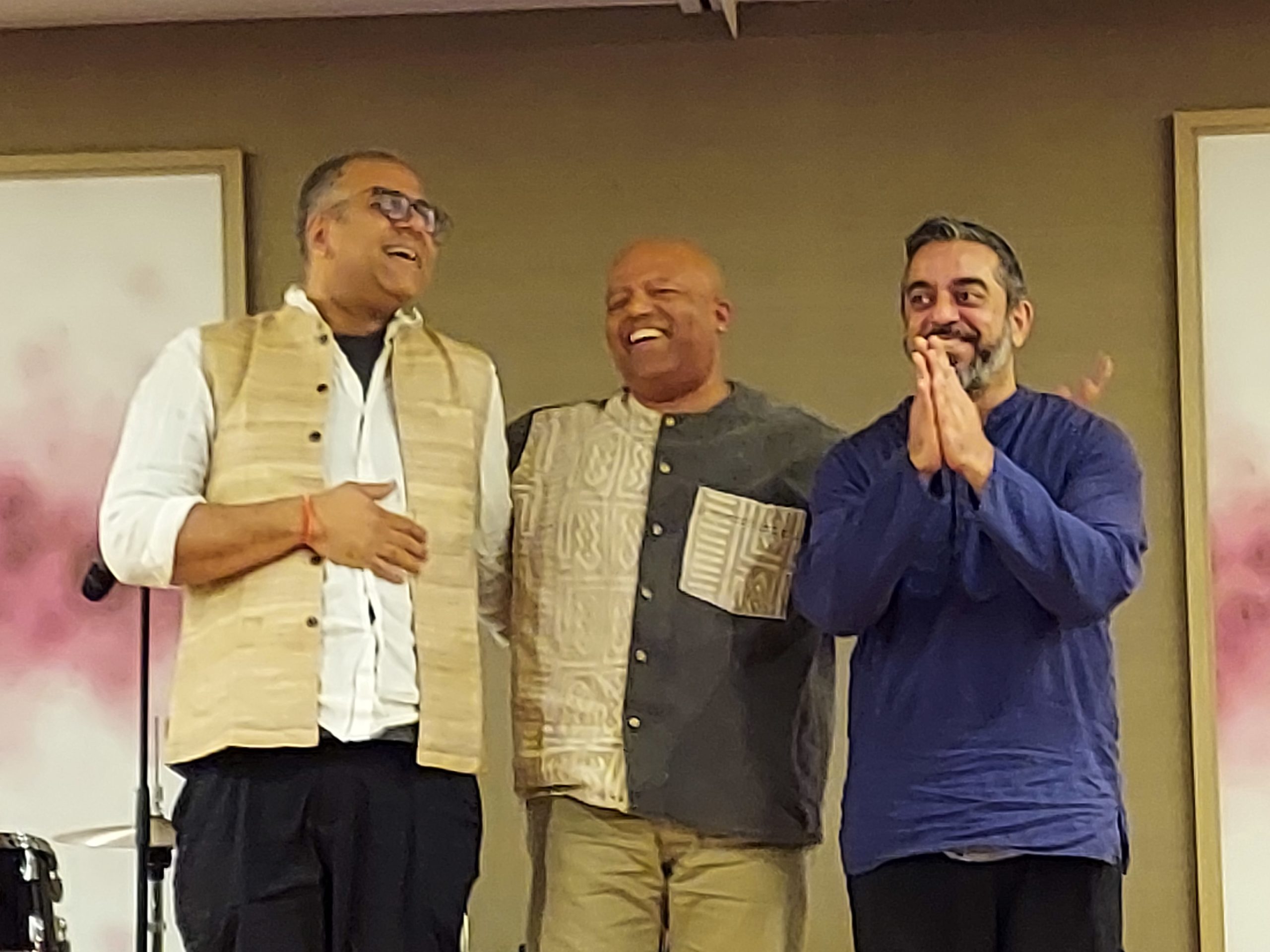
The Arun Ramamurthy Trio (Sameer Gupta, Damon Banks, and Arun Ramamurthy) right after they proved that great music can happen, even in a conference room at a hotel!
Admittedly I did not attend the luncheon honoring new music soprano and educator Lucy Shelton (recipient of CMA’s 2023 Richard J. Bogomolny National Service Award) and Palestinian-American composer/multi-instrumentalist Ronnie Malley (recipient of CMA’s 2023 Michael Jaffee Visionary Award). There was an extra $45 charge to attend and it was probably too late to get a ticket plus I had already paid for and attended the similarly priced networking luncheon on Friday and was somewhat worried that eating yet another meal (Friday’s was albeit a tasty Asian-themed buffet which was an improvement over previous years’ fare) on a round table surrounded by a group of necessarily unmasked people some of whom I probably did not know was probably too much of a crapshoot after having already attended the opening reception as well as eating and drinking during the ensemble showcases at DROM.
Still, overall the 2023 Chamber Music America conference was head and shoulders above most of the annual CMA conferences I’ve attended in recent memory. So a special shoutout is in order to conference chair Jennie Oh Brown as well as to CMA’s visionary and extremely articulate new CEO Kevin Kwan Loucks, who is also an active chamber music pianist. I was thrilled that during his introductory remarks to the keynote speaker Loucks mentioned that CMA is in the process of trying to secure their own performance venue which I imagine will be as galvanizing a space for the chamber music community as OPERA America’s National Opera Center has been for singers, vocal coaches, producers, composers, librettists and all the other members of the opera community. I should also write a few words about that keynote speaker, film, television and stage actor Giancarlo Esposito, whom I first became acquainted with from his performance as the intellectually rigorous tempestuous militant Buggin’ Out in Spike Lee’s 1989 motion picture Do The Right Thing. Esposito offered many pearls of wisdom during his extremely performative speech, but the two that left the strongest impression on me is that our goal as artists (whether creative or interpretative artists) should be “to bring people from one state of consciousness to another” and that the only thing “we have the ability to control is our attitude.” Finally, I want to offer my heartfelt thanks to CMA’s Susan Dadian who, as per every other conference I have attended since she joined the staff many many years ago, tirelessly kept finding me to introduce me to composers who were there whom she thought I may not yet know. I will be back again next year!



